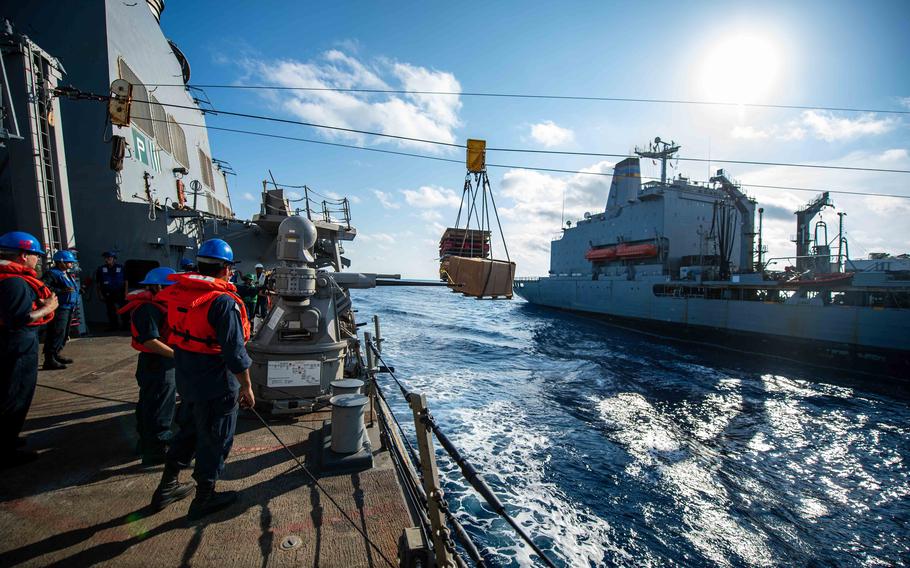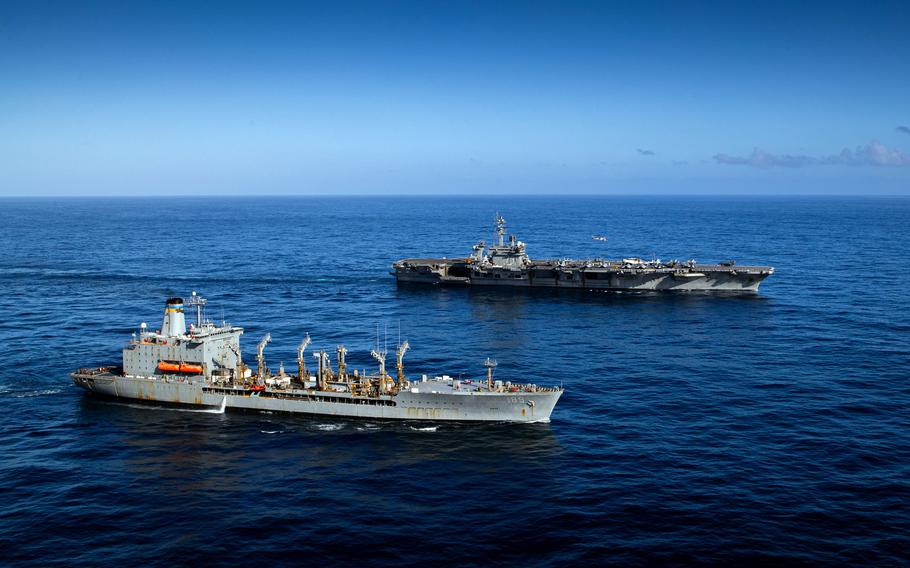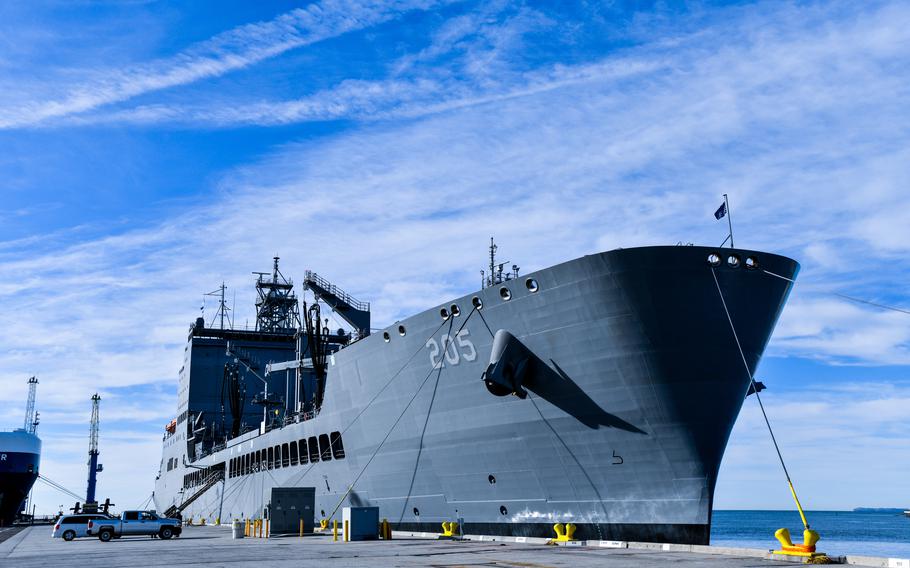
The destroyer USS Laboon receives supplies from the Military Sealift Command fleet replenishment oiler USNS John Lenthall in the Atlantic Ocean in July 2023. The Navy is facing a critical shortage of skilled civilian mariners needed to man its hospital, oiler and other support ships managed by Military Sealift Command. (Jacob Hilgendorf/U.S. Navy)
A Navy plan to buy at least eight more replenishment oilers for $6.75 billion has raised doubts whether the service will be able to crew the ships when they’re ready.
The oilers are critical to keeping the Navy’s warships moving in a hypothetical war against an adversary with a large modern military, such as China, analysts say.
But it remains unclear how the service over the long term will address the shortage of skilled civilian mariners needed to man oiler, hospital and other support ships managed by Military Sealift Command.

The aircraft carrier USS George Washington and fleet replenishment oiler USNS John Lenthall conduct a vertical replenishment in the Pacific Ocean on June 14, 2024. The Navy is facing a critical shortage of skilled civilian mariners needed to man its hospital, oiler and other support ships managed by Military Sealift Command. (Geoffrey L. Ottinger/U.S. Navy)
The temporary fix is to sideline 17 ships. The Navy hopes that a plan to reassign 700 people from those ships to others will fill gaps and allow mariners to take adequate vacation time.
The underlying problem with the proposal is “that they are pulling these crews from vessels that are a lot different than the oilers and the underway replenishment ships,” said Sal Mercogliano, an adjunct professor at the U.S. Merchant Marine Academy who has served ashore and at sea for Military Sealift Command.
Many of the mariners being reassigned are coming from cargo ships, Mercogliano said.

USNS John Lewis sits pierside at the Naval Surface Warfare Center in California on Nov. 4, 2022. Three new John Lewis-class vessels have been delivered to the Navy but not yet deployed. (Dana Rene White/U.S. Navy)
Unlike active-duty sailors, civilian mariners are at-will employees, meaning they can quit their jobs at any time.
“They don’t have the experience, and some of them may not come,” said Mercogliano, who likened the discrepancy in skills to that between taxicab operators and long-haul truck drivers.
Military Sealift operates about 125 civilian-crewed ships that replenish Navy ships, pre-position combat cargo at sea and conduct specialized missions. The fleet’s 15 Kaiser-class oilers also are operated by the command, according to its website.
In all, roughly 5,500 civilians fill about 4,500 jobs across Military Sealift Command. But about 10,000 mariners are needed, experts say.
A grueling schedule, along with a policy that forced many civilian mariners to stay on their ships for months on end during the COVID-19 pandemic, led many of them to leave.
Meanwhile, the Navy is replacing the current class of oilers, which were first commissioned in 1987. Three new John Lewis-class vessels have been delivered to the service but not yet deployed. Three others are under construction and another three are under contract, according to the Navy.
The number of civilian mariners freed up for that new construction by moving about 12 expeditionary fast transports, or EFPs, and five other ships to inactive status likely would be insufficient, said Steven Wills, a retired Navy officer and research scientist at the Arlington, Va.-based think tank CNA.
“Each EFP has a nominal crew of 22,” Wills said. “It takes 99 such people to crew a John Lewis-class (oiler), so not much additional ship crew bought by that change.”
Maritime Sealift Command needs to address the crew shortage by stepping up recruitment efforts at the U.S. Merchant Marine Academy and six state maritime academies, analysts said.
Those efforts could include incentives, such as help with paying for tuition at the state academies.
The command also needs to ensure that policy is changed so mariners at sea receive adequate paid leave, while administrative backlogs that keep them from quickly receiving required credentials for sea duty are eliminated, Mercogliano said.
More attention should be paid to helping Navy veterans gain the education and certifications needed to transition to a civilian mariner career, Mercogliano added.
“If you run into opposition long enough, you’re going to say, ‘I’m going to do something else,’” he said. “You lose mariners that way.”